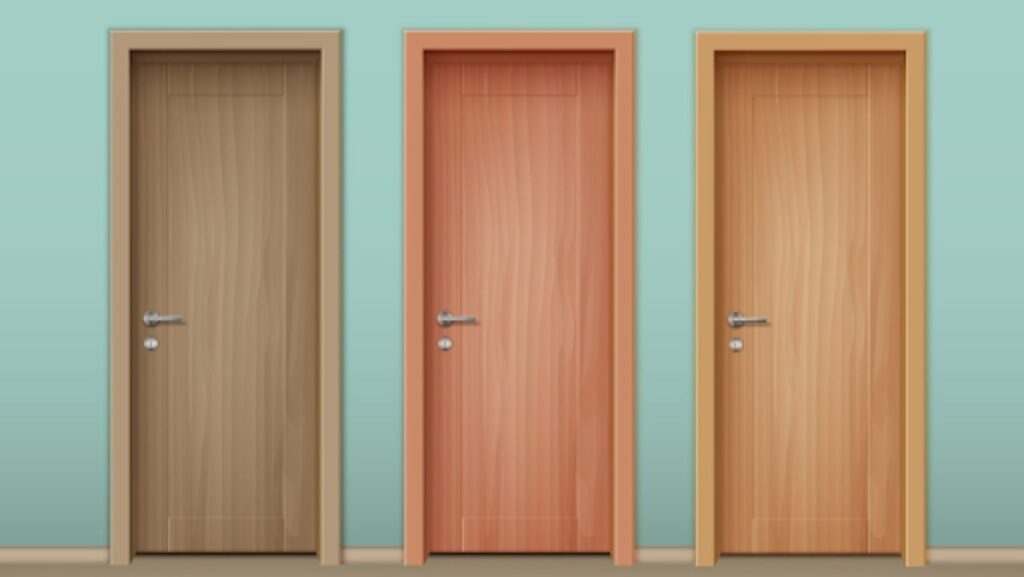When constructing or remodeling hotels and apartments, every element matters—but none more than the doors. The right types of doors not only enhance the property’s aesthetic but also ensure safety, energy efficiency, and long-term value. For developers and contractors, choosing the ideal doors requires a strategic balance of function, design, and budget.
In this guide, we’ll explore the most recommended types of door used in hospitality and multi-family residential buildings, giving you a comprehensive overview to aid in smarter selection. Whether you’re sourcing for large-scale projects or boutique properties, understanding each door type will help ensure your success.
1. Solid Wood Doors
Solid wood doors are favored in luxury hotels and high-end apartments for their classic appearance and durability. Crafted from premium hardwoods like oak, walnut, or mahogany, these doors provide excellent sound insulation—essential in hospitality environments.
- Pros: High-end look, durable, natural insulation
- Cons: Heavier, more expensive
- Best For: Main entry doors, premium suite interiors
2. Hollow Core Doors
A popular budget-friendly option, hollow core doors feature a lightweight core typically made of cardboard or foam and are covered in wood veneer or MDF. These are ideal for interior use where heavy insulation isn’t necessary.
- Pros: Economical, easy to install
- Cons: Poor soundproofing, less durable
- Best For: Interior room doors in budget apartments or staff areas
3. Fire-Rated Doors
Fire-rated doors are a legal and safety necessity in any hotel or apartment complex. Designed to resist fire for 30-90 minutes, they help protect occupants during emergencies.
- Pros: Mandatory for safety compliance, adds protection
- Cons: Often costlier, design limitations
- Best For: Stairwells, exit routes, and corridors
4. Glass Doors
Glass doors—either fully glazed or with partial panels—offer a modern, luxurious look.

When reinforced with laminated or tempered safety glass, they become suitable for entryways or balcony access.
- Pros: Visually appealing, allows light in
- Cons: May compromise privacy, less insulating
- Best For: Balconies, spa entrances, office units
5. Metal Doors
Commonly made of steel or aluminum, metal doors are known for their strength and resistance to wear. They are often used in utility areas, service entrances, and modern apartment complexes.
- Pros: Durable, secure, fire-resistant
- Cons: Industrial appearance unless finished well
- Best For: Back doors, maintenance areas, elevators
6. Sliding Doors
Sliding doors are a go-to for maximizing space and enhancing room aesthetics. They’re widely used for patios, closets, and connecting rooms in both hotels and apartments.
- Pros: Space-saving, sleek look
- Cons: Limited sound insulation
- Best For: Balconies, closet doors, room dividers
7. Panel Doors
Panel doors are versatile and available in a range of designs. Made from wood or composite materials, they can be either single or multi-paneled, offering visual depth.
- Pros: Customizable, elegant, good insulation
- Cons: Higher cost for detailed designs
- Best For: Hotel rooms, apartment entryways
8. Flush Doors
Clean and minimalist, flush doors feature a flat surface and are often used in modern interior designs.

They’re affordable, easy to maintain, and available in both solid and hollow cores.
- Pros: Cost-effective, easy to clean
- Cons: Basic Appearance
- Best For: Hallways, staff areas, minimalistic units
9. Pocket Doors
For tight spaces where a door swing is impractical, pocket doors slide into a compartment in the adjacent wall. They’re great for small apartments or modern hotel designs.
- Pros: Saves space, modern appeal
- Cons: Installation requires precision
- Best For: Bathrooms, small bedrooms, connecting rooms
10. Material Considerations for Contractors
Choosing the right type of door goes beyond style and function. Contractors must assess the following:
FeatureConsideration
- Soundproofing: Use solid-core or acoustic-rated doors
- Security: Choose steel or fire-rated doors with secure locking
- Climate: Insulated metal or composite doors resist weathering
- Budget: Mix high-end entry doors with cost-effective interiors
Conclusion
Selecting the right types of doors for hotels and apartments is a strategic decision for any contractor. From fire-rated entries to stylish sliding panels and even thoughtfully chosen fire retardant hotel curtains, the choice impacts not only safety but also design cohesion and occupant comfort.
When consistency, quality, and style are your goals, OPPOLIA doors offer a reliable solution. Known for their craftsmanship and innovative designs, OPPOLIA manufactures premium doors suited for all building types—from economy apartments to 5-star hotels.
Whether you’re building 10 or 1000 units, you’ll find types of doors that meet every design and safety specification. Their products come in a variety of finishes, materials, and custom sizes, ensuring flexibility and compliance with international standards.
